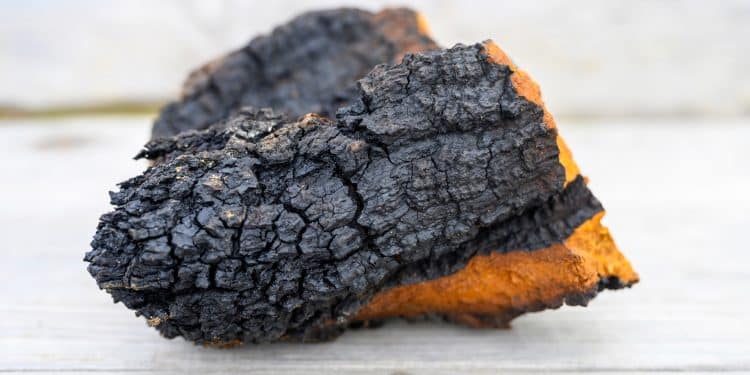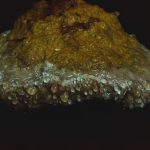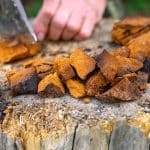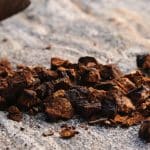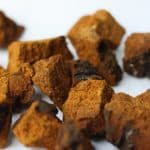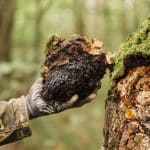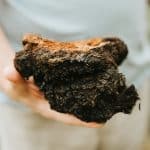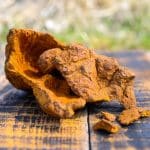Does Chaga Have A Fruiting Body?
Since the harvested portion of the chaga is in fact a woody fungus, rather than mushroom in the traditional sense, this raises the question whether chaga has a traditional fruiting body. Yes, it does, but we do not often see one since it’s beneath the typical dark woody part of chaga.
The actual mushrooms (fruiting bodies) are formed beneath the bark of the birch tree. After a tree dies, the bark is slowly pulled away from the tree, showing sporocarps (fruiting bodies). This fruiting body is a grayish, smooth, porous, multilayered mass, with pores that descend in cascades. You can see an image of that here.
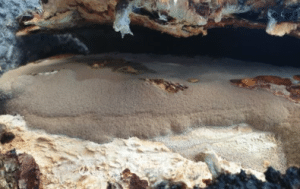
When conditions are right, the porus layers will start to expel spores that get carried on wind, eventually landing in and infecting new trees, where the infection process begins again. Insects also love to eat mushrooms, which helps to carry spores to new areas.
Learn more: How to dry chaga mushroom
How Does The Chaga Fruiting Body Grow

What we refer to as chaga is the thick, black masses you see on the outside of trees that have been sprayed with a fungal infection called Inonotus obliquus. It is not a mushroom (fruiting body) but rather a dense, barren mass of decomposing bits of birch tissue, containing microbial organisms. When cut from the tree, it has a rusty yellow-brown interior, is granular to some extent, and is frequently mottled with white-to-cream-colored veins.
Chaga may be called sclerotium, a tight mycelial mass, but that is technically incorrect, since chaga is not pure mycelium. One research paper estimated that Chaga is only about 10% mycelium, based on microscopic observations. A more precise term for Chaga is it’s almost like a wort or kanker on the tree.
The external conks which are harvested are not to be confused with the actual fertile fruit bodies, which usually develop beneath the partially detached bark of a dying or fallen tree. This fruiting body is a grayish, flat, thin-layer mass, up to 3-4 meters long and 40-50 centimeters wide, with down-cascading pores, that are spore-producing layers of the polypore fungus which you can see in the image above.
What is Chaga Made Of?
Chaga is a slow-growing mushroom found mostly on Birch Trees. Chaga is commonly found in northern hemisphere regions in boreal forests such as Russia, Korea, eastern and northern Europe, the northern areas of the U.S. and Alaska, Canada, and northern China.
Generally, well-developed sclerotia from Chaga are found on trees that are more than 40 years old, but infections can begin much earlier. The time period from initial infection to death of a tree is variable depending on number of infected sites and tree resistance, but is usually about 20 years.
Learn more: How to grow chaga mushroom
After approximately 3 – 5 years of growth, chaga may be harvested. The harvested, dark-black husks are made up mostly of the wood lignans of the host trees, as well as mycelium of chaga mushroom. Because of this, when chaga grows on Birch, it also contains Birch compounds such as betulin and betulinic acid.
After harvesting, Chaga may grow back to harvestable size three to 10 years later, and can continue this process until the tree dies. Cutting the Chaga does not kill the organism, and mycelium is still within the tree, slowly eating away. Chaga is technically not a perennial by definition; it can survive for years while consuming its food source, but once this source is exhausted, then it dies from lack of nutrients.
You can find our favorite capsules, powders, and tincture’s on the following pages of our website and learn more about each individually:
